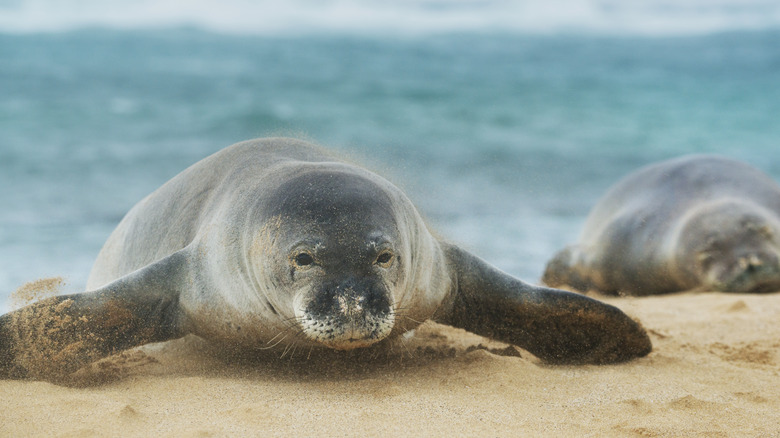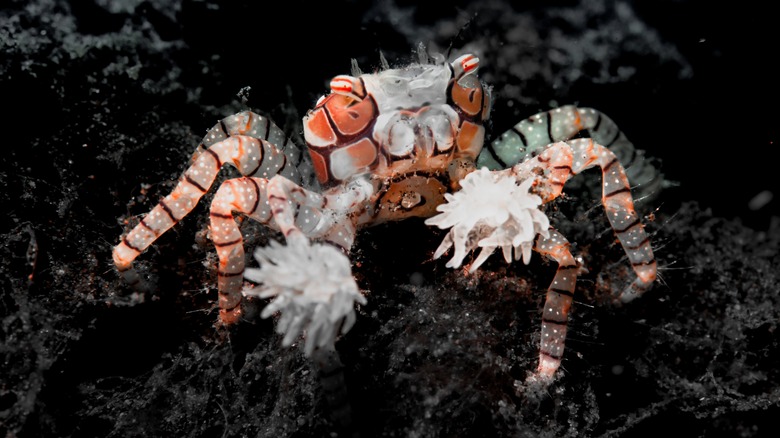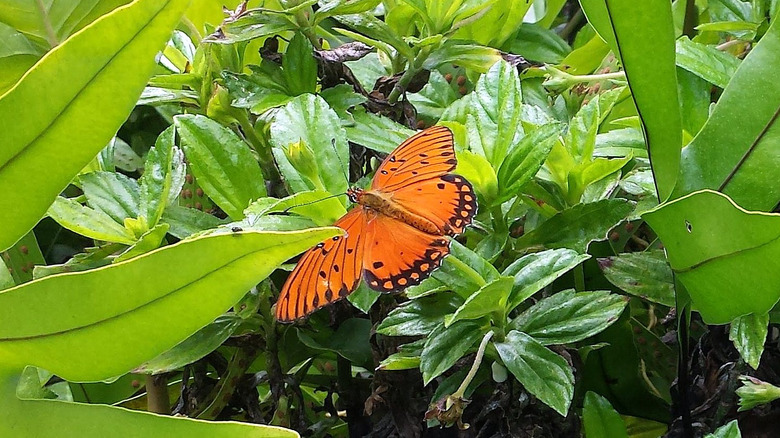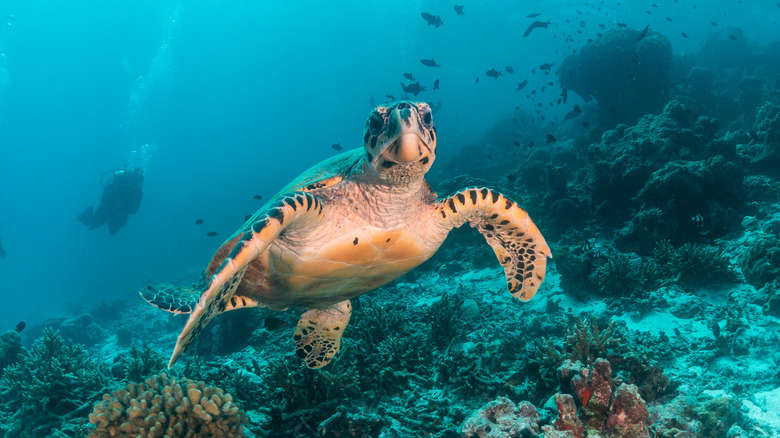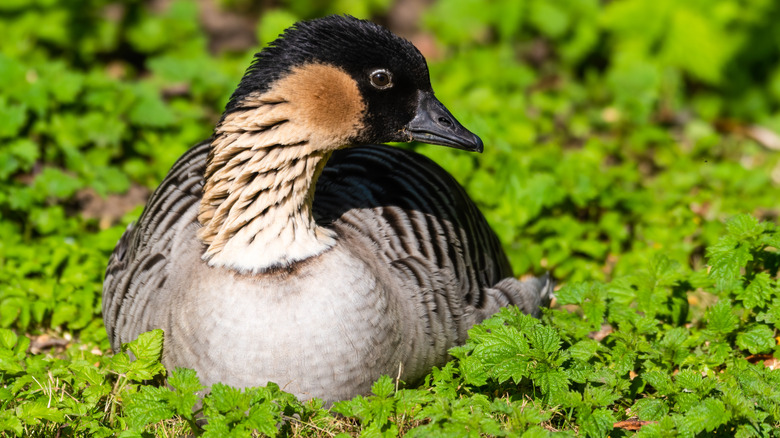Unique Creatures You May See While Visiting The Hawaiian Islands
Hawaii is one of the most remote areas of the world. Due to this, it has a very unique ecosystem in which a number of animals — unlike any found elsewhere on Earth — have evolved. While there are creatures to beware of in Hawaiian waters, there are also creatures to be in awe of — both in the water and on land. These animals include a variety of mammals, birds, reptiles, amphibians, and insects.
With wildlife getaways trending and insect-related travel on the rise, Hawaii is quickly becoming known for more than its incredible beaches, dramatic landscapes, and amazing hikes. The island chain has also become a popular last-chance tourism destination due to people hoping for an opportunity to view some of the numerous protected and/or endangered species that call the Hawaiian Islands home.
However, not every animal found in or around the Hawaiian Islands is a year-round resident or indigenous to the archipelago. Additionally, although Hawaii has very strict laws to prevent invasive species, over time, some unusual and iconic creatures such as the coqui frog, Jackson's chameleon, and mongoose (among others), were introduced there and have established thriving populations. However, even without including seasonal and invasive species, there are dozens of interesting and unique creatures you may see while visiting the Hawaiian Islands.
Hawaiian monk seals can be seen on Hawaiian beaches
When it comes to endangered species in Hawaii, the monk seal is the unofficial poster child of the struggles these creatures face. Not only are they one of the most endangered types of seals on the planet, they are indigenous to Hawaii and are not found anywhere else in the world. Unfortunately, they also appear very friendly and like to pull up onto beaches to rest, which sometimes encourages humans to attempt interacting with them — even though they are protected by both the Endangered Species Act and the Marine Mammal Protection Act. Feeding or disturbing these resting animals is dangerous for both the seal and human. It has become such an issue that Hawaii Department of Land and Natural Resources has resorted to running ads and printing posters to discourage such behavior.
So, if you happen to be lucky enough to spot a Hawaiian monk seal, be respectful and keep a safe distance away while viewing or getting photos of the animal. After all, sightings are increasingly rare. It is estimated there are only 1,600 of these marine mammals remaining. The chance of seeing one becomes even more remote when you consider only about 400 of those animals live around the main Hawaiian Islands, which are the six islands most visited by tourists — Kauai, Oahu, Molokai, Lanai, Maui, and the island of Hawaii. While seeing one of those endangered animals is rare, that scarcity actually makes the sighting all the more memorable.
Pom-Pom crabs have a unique defense strategy
Most crabs are known for having fierce claws or pinchers. Not so much when it comes to the pom-pom crab. As the name suggests, the pom-pom crab takes a bit of a different approach to defense and feeding. At just around a half inch wide, rather than rely on its claws to attack, the pom-pom crab, also known as the Hawaiian boxer crab, waves its pom-poms as it boxes with its prey or opponent.
While these poms may appear to be harmless appendages, they are neither harmless nor part of the crab. Rather, when it's time to fight, the pom-pom crab grabs a toxic sea anemone in each claw and uses them as a weapon. Lest they be caught unarmed, the pom-pom crab actually carries the sea anemones with them wherever they go. However, it's not as if the anemones are being held hostage. These two sea creatures have somewhat of a codependent relationship and rely on one another for survival.
There are actually 10 species of pom-pom crabs worldwide. However, the Hawaiian boxer crab is unique to Hawaii and is often seen while swimming, snorkeling, or diving around the islands.
Happy-face spiders smile in the face of danger
Not only are happy-face spiders endemic to Hawaii, they don't even reside on all the islands in the chain. In fact, these quirky little arachnids only populate four of the Hawaiian Islands — Hawaii, Maui, Molokai, and Oahu. However, even within that range, happy-face spiders are not commonly seen. This is because they tend to live underneath leaves within rainforests at high altitude. They are also commonly found in forest areas near the volcanoes within Hawaii Volcanoes National Park — which is a bucket list national park for more than just these smiling spiders.
It is commonly thought the distinctive smiley face pattern found on the spider's abdomen is a defense mechanism, meant to confuse potential predators. However, researchers have discovered these unique arachnids are also capable of several color morphs, making them even more of an evolutionary oddity.
Those wishing to catch a glimpse of a happy-face spider are best served spending time hiking in the higher altitude rainforests on one of the four islands in which they live. Move slowly along the trail and take time to look beneath as many broad leaves as possible along the way. Careful observation could very well result in your staring at a smiling face beneath the green leaves of the rainforest.
Kamehameha butterflies are royalty in Hawaii
Although it may appear similar to some species of butterflies found throughout the continental United States, the Kamehameha butterfly is endemic to Hawaii and does not exist anywhere else in the U.S. or the world. According to researchers at the University of Hawaii at Manoa, there are even several species within the Hawaiian Island chain that can be confused for Kamehameha butterflies.
So, what sets this particular species apart? Well, for starters, they are one of two butterfly species that is endemic to the islands and is the official state insect of Hawaii. It was named after King Kamehameha and the Kamehameha family, who are credited for first unifying the tribes from across the Hawaiian Islands. Physically, speaking, they are similar to other species, such as painted ladies, and are extremely fast, so it is often difficult to get a close enough look to distinguish between them. However, the best way to make a positive I.D. is checking the number of white spots on the wings of females or light orange spots on the wings of males. Kamehameha butterflies only have three, while all of the look-alikes will have varying numbers in excess of three.
If you do happen to catch a glimpse of a Kamehameha butterfly and are able to photograph it, you can help with the ongoing conservation effort by submitting it to U.H.M.'s Pulelehua Project.
Hawaiian hawksbills are among the world's rarest sea turtles
If you visit Hawaii, you are almost assured to spot sea turtles. However, most likely, those will be green sea turtles — the most populous species of sea turtle in the Hawaiian Islands. The Hawaiian hawksbill sea turtle is a much rarer sight. This is partly because of their numbers, as they are considered one of the most endangered sea turtles species in the world. But, it is also because they spend their entire lives in the water. Well, at least the males do. Sexually mature females will come ashore to nest, although it is estimated that less than two dozen do so annually. Their elusiveness is compounded by the fact that they only nest on a handful of beaches throughout the entire archipelago. While there are other hawksbill sea turtles throughout the world's oceans, the Hawaiian version is genetically unique. Additionally, while other species of sea turtles may travel great distances, the Hawaiian hawksbill never leaves the island chain.
Although the population of Hawaiian hawksbill sea turtles has never been particularly large, it has been shrinking through the years. According to the Hawaii Wildlife Fund, one of the greatest dangers facing these endangered sea turtles is artificial lighting along the islands' beaches, which can disorient females coming looking to nest or prevent them from coming ashore at all. As a result, locals and visitors alike are encouraged to turn off lights along the beach during turtle nesting season, which runs May through December. Additionally, if you happen across a sea turtle on the sand, do not approach it and report the sighting.
Nene geese have made a remarkable comeback
It is likely that when you think of Hawaii, geese aren't the first thing that come to mind. However, the nene goose is 100% Hawaiian. In fact, it is the state bird of Hawaii — although not that long ago it was on the brink of extinction. By the mid-1900s, less than three dozen of these birds remained. Thanks to conservation efforts, along with a captive breeding and repopulation program, the nene has once again become a common sight throughout Hawaii.
While the nene population is once again stable today, it's apparently a bit of an accident they are here at all. It is theorized that a flock of wayward Canadian geese somehow ended up in Hawaii around a half million years ago. Through the millennia, around half a dozen distinct species evolved. However, once the earliest human inhabitants of Hawaii arrived, all but the nene were hunted to extinction, leaving it as the lone goose species to inhabit these remote Pacific islands.

